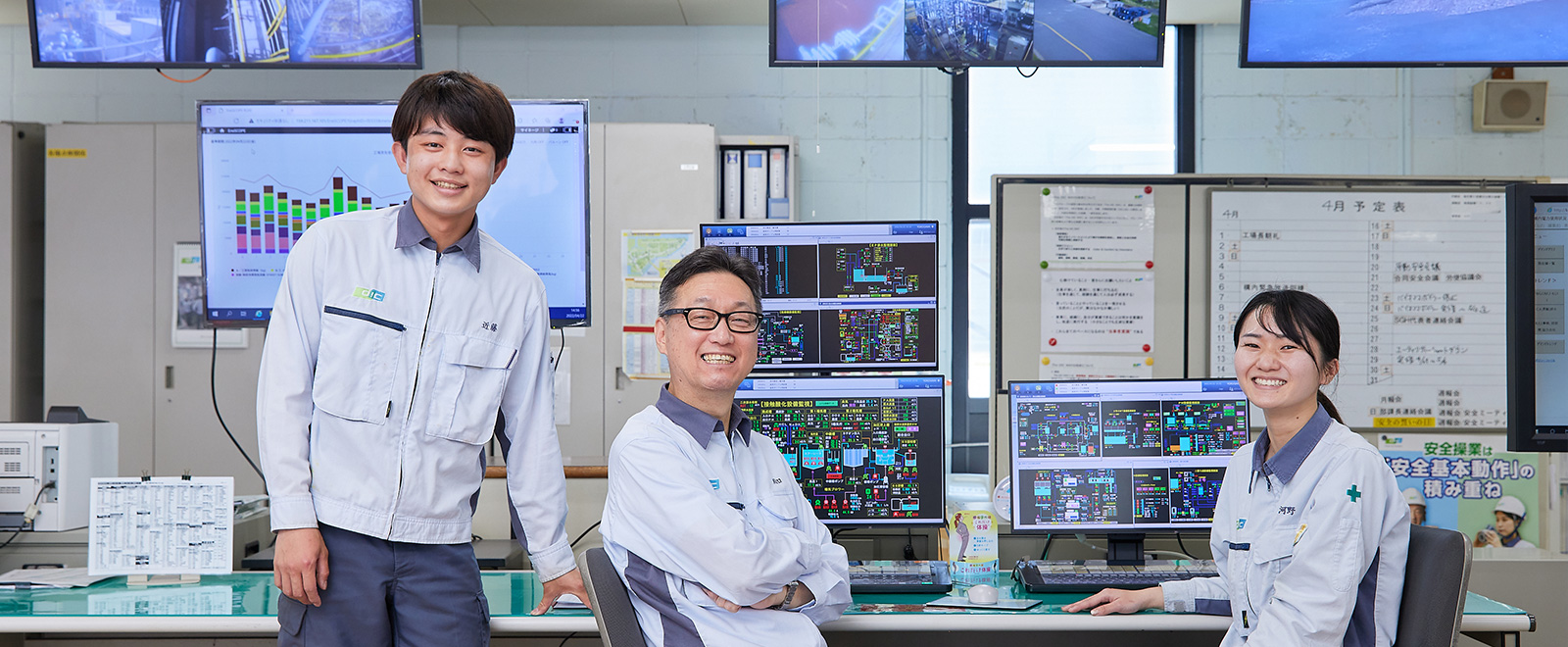

Climate change is today widely perceived as a critical global issue that needs to be urgently addressed. Against this backdrop, attention is being increasingly focused on what companies are doing to combat global warming. The DIC Group has set a target for reducing annual CO₂ emissions by 50% from the fiscal year 2013 level by fiscal year 2030, with its long-term goal of achieving carbon neutrality—net zero CO₂ emissions—by fiscal year 2050.
Group Manager Kazuo Kawaguchi of the Kashima Plant’s Utility Control Group 2 has spearheaded the domestic DIC Group energy management program. We spoke to him about the plant’s initiatives to save energy and to use energy from renewable sources, as well as the Group’s road map for realizing its fiscal year 2050 carbon neutrality goal.
Taking advantage of opportunities to upgrade systems
As outlined in Part 1, the formulation of an effective plan for restructuring the Kashima Plant’s energy mix that transcends the current framework was made possible thanks to the experience and know-how of employees who have been involved in pertinent initiatives at various DIC sites. As Group Manager Kazuo Kawaguchi of the plant’s Utility Control Group 2 points out, it is important to look at energy saving not as a one-time challenge, but rather to recognize that continuous and steady efforts are required, and that the achievement of truly significant reductions in energy consumption and CO₂ emissions mean taking advantage of opportunities to upgrade equipment when they arise every few years. “The lifespan of the equipment at a chemicals plant is about eight years,” Kawaguchi explains. “When the time comes to upgrade a piece of equipment, it is an important opportunity for us. It is imperative to improve energy-saving performance, as well as to respond to changing demand, so if we simply install what precedent says should be the appropriate choice, we might regret it several years in the future. I believe it is important to formulate reliable three-year facility maintenance plans. For example, depending on the matter at hand, I think it is can also be a good idea to involve the Utility Control Liaison Working Group and the Production Planning Department.”

Even if the power supply is disrupted by a strong earthquake (seismic intensity of 5 Upper or higher), safety is always the priority
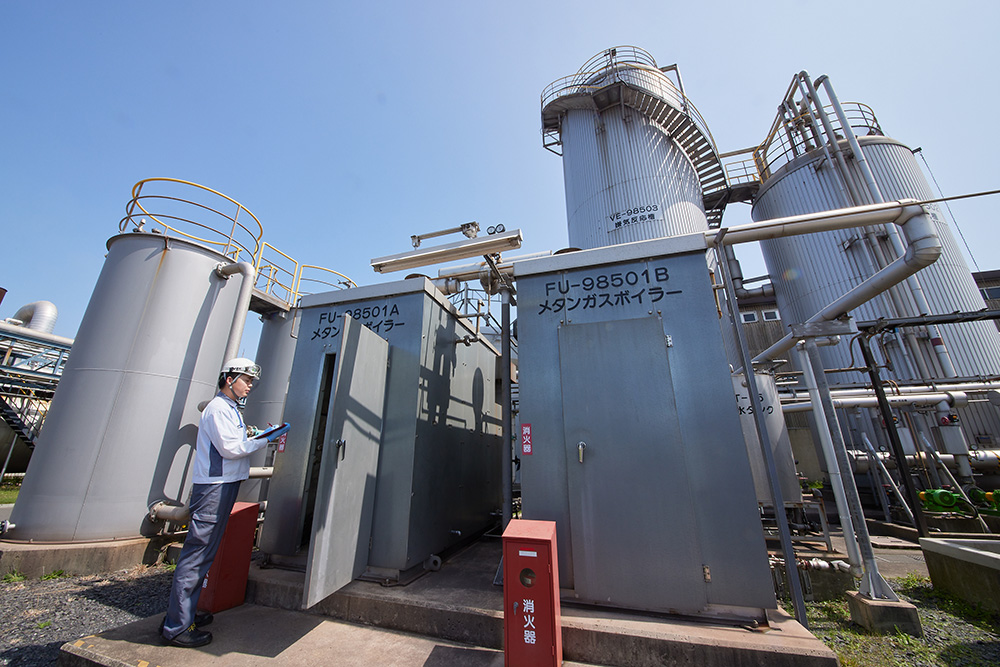

In addition to energy management, utility control groups play a major role in overseeing their respective production facility’s responses to emergencies such as fires, explosions and chemical leaks. If a fire breaks out, for example, pumps are activated to extinguish the flames. Should a chemical leak occur, floodgates are closed immediately to prevent discharge into the ocean and chemicals are diverted to a containment pit.
“In the event of an earthquake with a seismic intensity of 5 Upper or higher on the Japan Meteorological Agency scale, the Kashima Plant promptly suspends all boiler operations and all supplies of city gas until the facility’s safety can be confirmed,” says Kawaguchi. “This is also the responsibility of the utility control groups. If electric power supplied by electric power companies is cut off, all regular power generators which are grid-connected, cease operating. To ensure safety in such instances, the plant is equipped with emergency generators, which prevents any abnormal reactions.”
The Kashima Plant placed a high emphasis on safety even before the Great East Japan Earthquake in 2011. “The violent shaking severed the plant’s bus cables, while the surrounding roads were distorted into undulations,” Kawaguchi elaborates. “In the wake of the disaster, it was difficult to bring in raw and other materials, as a result of which the facility was forced to suspend operations. With strong concerns regarding disruptions to the global supply chain for mobile phones and liquid crystal display televisions (LCD TVs), we focused first on restoring the production floors for related materials, which we were able to restart in only three weeks. It took about two months for the rest of the plant to resume operations. Safety was of course our priority, so most of the time was spent on equipment repairs and inspections, as well as repeated trials and operational testing. This ensured the safe, stable resumption of plant operations.”
Horizontal global deployment of the Kashima Plant’s energy-saving and CO₂ emissions reduction initiatives
Companies today are expected to assume diverse roles and responsibilities beyond their core operations, including responding to disasters and addressing environmental issues. That said, a company’s original obligation to bolster competitiveness and increase the value of its businesses is also essential to ensuring sustainable growth. In fiscal year 2021, DIC acquired the Colors & Effects business of Germany’s BASF SE with the aim of strengthening its position as one of the world’s foremost pigments manufacturers and to provide customers with an even broader range of solutions. While this move has significantly expanded the scale of the DIC Group’s operations, it is also expected to increase the Group’s CO₂ emissions. Kawaguchi is confident that the achievements and experience of the utility control groups will ensure DIC’s ability to resolve this challenge.
“Overseas sites account for approximately 60% of energy consumed by the global DIC Group—and thus of its overall CO₂ emissions. With the addition of the Colors & Effects business, the weight of overseas sites in these calculations has risen,” Kawaguchi explains. “When I was in charge of energy strategy at corporate headquarters, I also visited the production sites of subsidiaries in the People’s Republic of China (PRC) and the Asia–Pacific region to conduct energy-saving analyses and energy-saving promotion conferences, and met with local management regarding the importance of environmental investments. I have since stepped away from that role, but I now look forward to cooperating closely with corporate headquarters to ensure that the energy-saving and decarbonization initiatives implemented at the Kashima Plant can be deployed horizontally at the Colors & Effects business sites in Asia, the United States and elsewhere.”
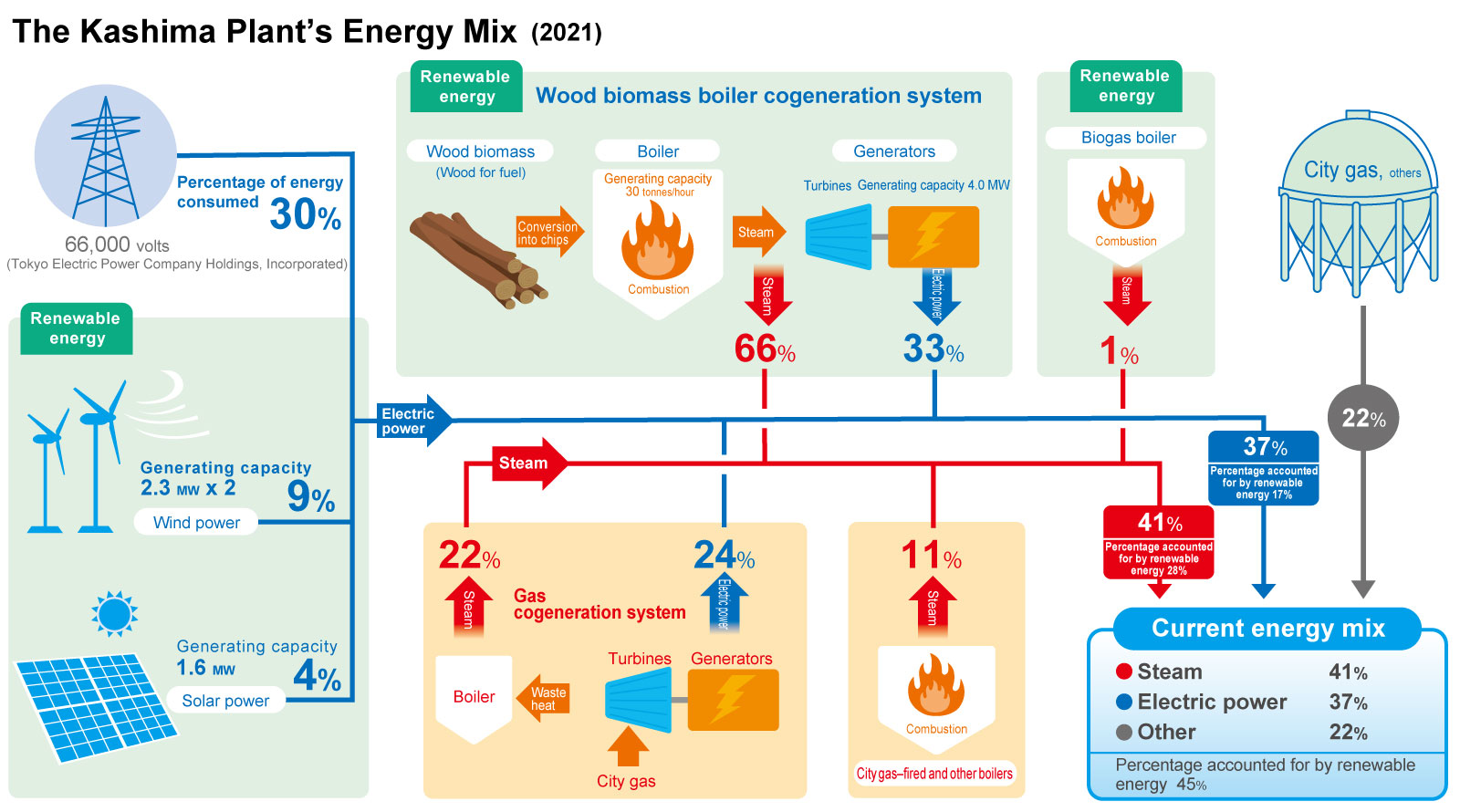
In closing, we asked Group Manager Kawaguchi, who has earned a reputation for having an optimistic and energetic demeanor, if he has his own personal motto. “My motto is ‘take it easy and enjoy,’” he says. “No matter how ambitious the target, its achievement depends on the accumulation of individual efforts; it’s not enough just to install the appropriate equipment. Ensuring continuity is also important. I want young employees to experience the satisfaction of discovering potential areas for improvement. The changes we implement make work processes easier. The easier work is, the more enjoyable it generally is. For this reason, we have sought to create an environment where anyone feels free to share their ideas. Creating workplaces where ideas flow freely is easier said than done, but I believe this is my most important objective at present. I hope we can all apply this ‘take it easy and enjoy’ approach to continue making DIC a better place to work. I always encourage young employees by reminding them that they have an active role to play in realizing the DIC Group’s management vision: ‘We improve the human condition by safely delivering color and comfort for stable prosperity.’”
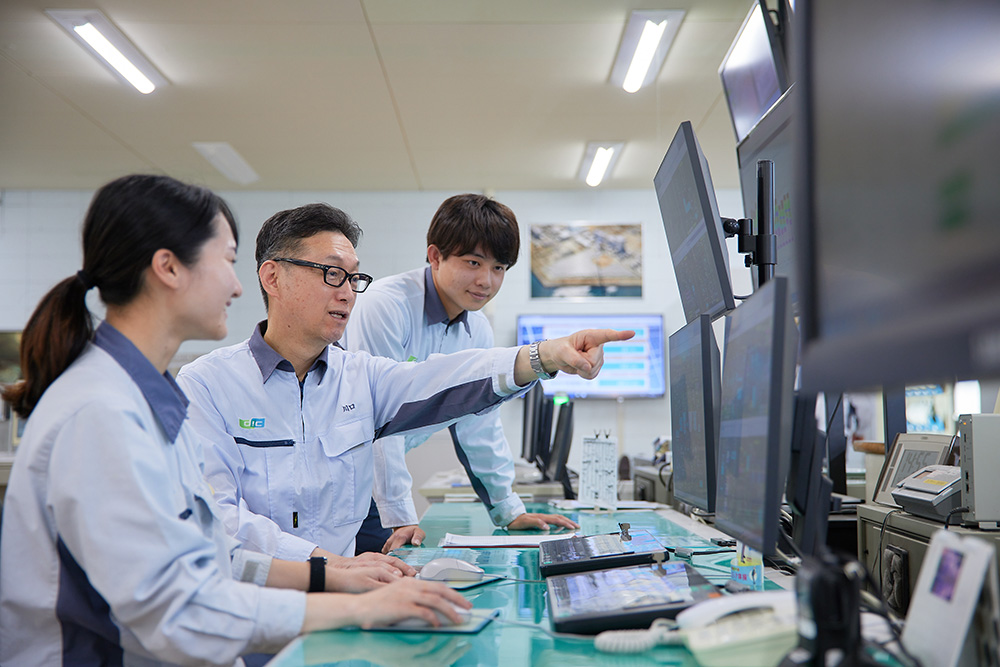
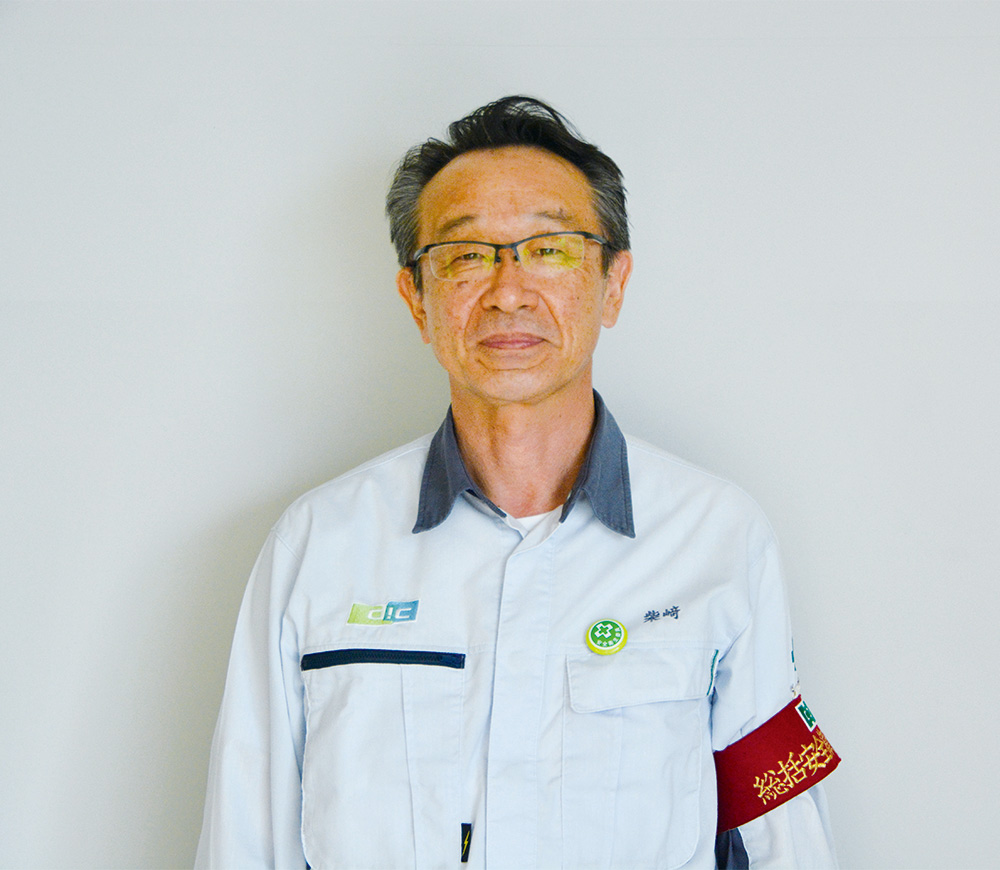
We are accelerating energy-saving initiatives and the use of renewable energy
Hideki Shibasaki, General Manager, Kashima Plant
“We take pride in the Kashima Plant’s position as a leader within the DIC Group in promoting the use of renewable energy and the realization of an effective energy mix. In addition to playing a central role in the implementation of decarbonization and renewable energy initiatives, Utility Control Group 2 is responsible for the around-the-clock operation of a variety of energy and wastewater-related facilities, mainly undertaken by the group’s younger employees,” describes General Manager Hideki Shibasaki.
“The Kashima Plant continues to promote initiatives to conserve energy and improve the energy mix, as well as to take various steps to maintain a high level of employee motivation. Going forward, it is my hope that our accumulated expertise and experience will enable us to continue playing a pivotal role in advancing decarbonization and restructuring the energy mix for entire DIC Group.”

